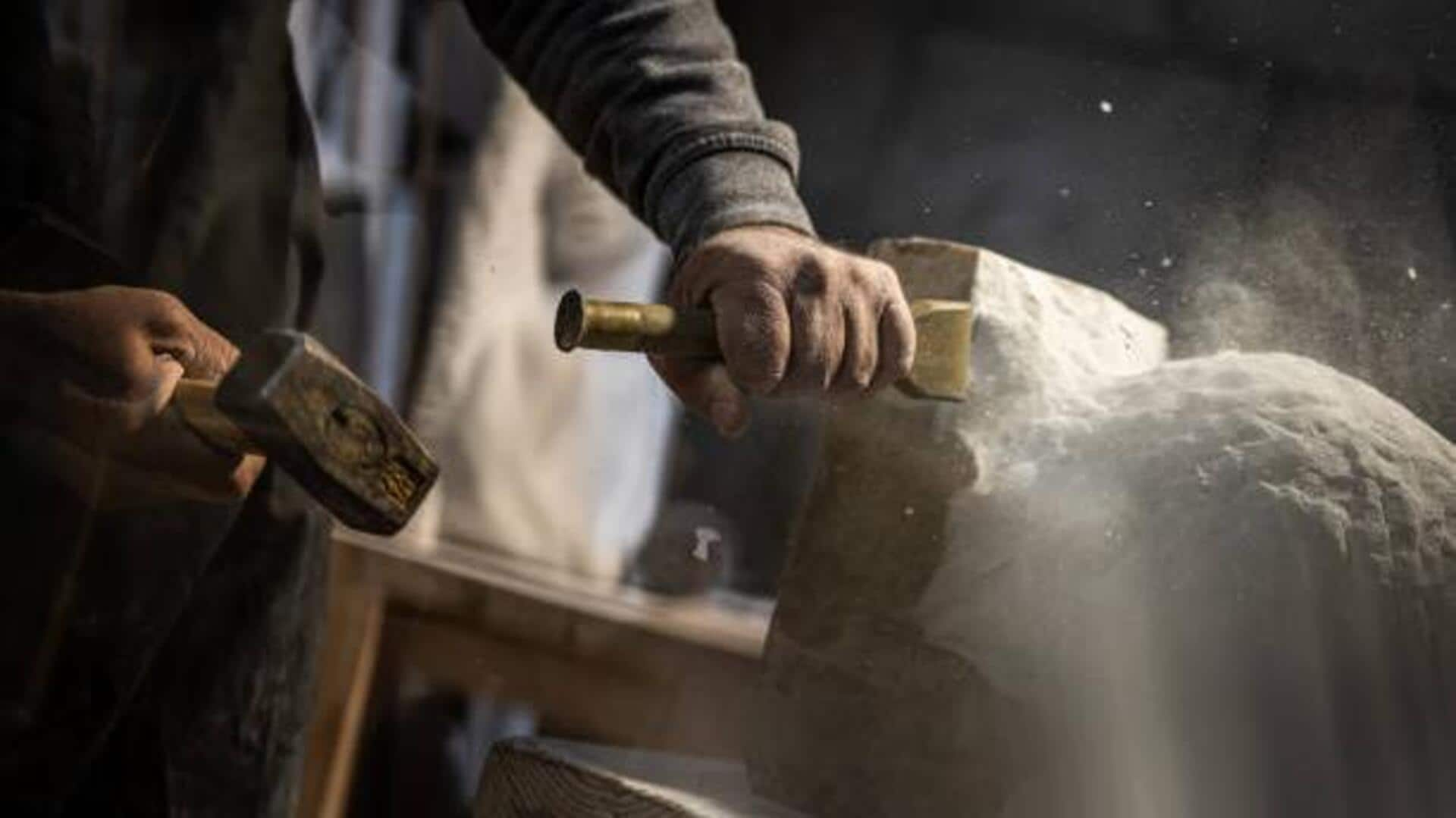
All about stone carving
What's the story
African stone carving is a rich centuries-old tradition that showcases the continent's diverse cultural heritage. These techniques have not only carved Africa's artistic landscape but also shaped world art. The intricate methods and tools in stone carving reflect the skill and creativity of African artisans. Here, we explore various aspects of African stone carving, its techniques, materials, cultural significance, and lasting impact on art globally.
Tools and techniques
Traditional tools and methods
Traditionally, African stone carvers use simple yet effective tools like chisels, hammers, and files to shape stones into intricate designs. The process usually begins with selecting a suitable stone type like soapstone or serpentine. Artisans then use techniques like direct carving to bring their vision to life. These methods require precision and patience, showcasing the artisan's expertise in manipulating hard materials into delicate forms.
Cultural impact
Cultural significance of stone carvings
Stone carvings are culturally significant to many African communities. They usually represent ancestral figures, deities, or daily life scenes that tell stories or express spiritual beliefs. These pieces of art are a way of preserving history and traditions in communities. Learning the meanings of these carvings reveals the values and customs that have defined African societies for generations.
Artistic influence
Influence on modern art forms
The impact of African stone carving goes beyond tradition into modern art forms across the world. Contemporary artists take cues from these ancient techniques to push boundaries. The pieces fuse traditional motifs with modern-day aesthetics. This cultural cross-pollination enriches the practices of local artists and international art scenes alike. It brings forth new perspectives grounded in age-old craftsmanship.
Economic benefits
Economic impact on local communities
Stone carving offers major economic advantages to many African communities by earning income through local markets or international exhibitions. This craft sustains lives while encouraging cultural heritage tourism in areas famous for their distinctive artistry styles like Zimbabwean Shona sculptures or Kenyan Kisii soapstone carvings—driving sustainable development through creative industries based on tradition but willing to embrace the world.